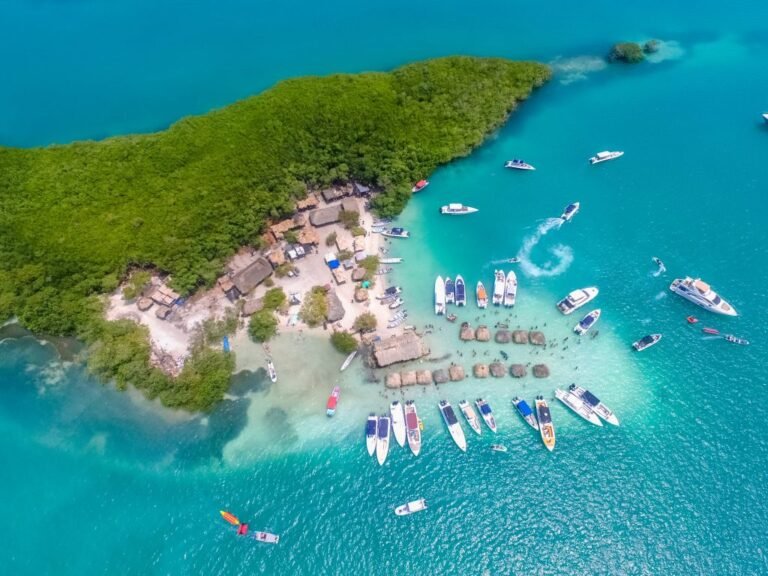Cartagena blends traditional and modern vibes, making it the most visited city in Columbia. It is located on the Caribbean coast, featuring a rich history of the walled city, ultramodern skyscrapers, castles, colorful buildings, beaches, hotels, cafes, and restaurants.
The city has played a crucial role in Columbia’s history and protected the country from numerous invasions. So, if you want to know about Cartagena’s history, you have landed on the right page. Without further ado, let us discuss the brief history of this beach town. Read on!
Who Founded Cartagena de Indias?
Pedro De Heredia, a Spanish commander, founded Cartagena on June 1, 1553. The commander took over Calamari, an abandoned Amerindian village, and started the city’s rehabilitation.
Spanish sailors were the first settlers who arrived from Spain in Cartagena. Those people settled in the place and started a new life. Not only did Spanish settlers establish the Cartagena de Indias, but they also made substantial efforts to make it an active port.
However, only 200 people were living in Cartagena at that time. There was only one church in the town, allowing people to practice their faith and religious ceremonies. A fire erupted in 1552, burning buildings made of wood.
That’s why the governor ordered the construction of buildings from stone instead of wood to withstand natural calamities or man-induced fires. Spanish settlers in Cartagena also discovered treasures in the Sinus Amerindian tribe’s tombs and graves.
Invasions During the 16th Century
Cartagena had strategic geographic importance, forcing different countries to attack the city and invade it to access the tressure and other resources. For instance, Jean-Francis Roberval, a French Huguenot, attacked the town in 1563.
Likewise, Sir John Hawkins and his crew invaded the city in 1576, followed by the attack by Sir Francis Drake in 1586. Jean Ducasse and Jean-Bernard Desjeans, in 1697, also attacked Cartagena. The primary purpose of these attacks was to store the region’s resources.
However, Spanish settlers, including wealthy people from Spain, traveled to Cartagena and occupied lands and properties. These rich and business-oriented people constructed mansions and invited people from Spain to settle and live in Cartagena. The primary objective was establishing a Spanish colony and allowing people to make their fortune by leveraging rich resources.
The Battle of Cartagena
The Queen of England planned to invade Spanish colonies and ports in the Caribbean in 1741. She ordered Edward Vernon to devise a strategy to throw out the Spanish efficiently and quickly and establish British rule.
Spanish settlers and British invaders fought the deadly battle of Cartagena. However, Spanish forces dominated the British invaders and won the war. The Spanish authorities fortified the city after the bloody battle by building state-of-the-art defense structures to protect this strategic port in Latin America.
Independence From Spain
While most settlers in Columbia were Spanish, they started an independence movement to gain freedom from Spain. Cartagena played a critical role in Columbia ending the Spanish rule and establishing its own “order.”
The city declared independence from Spain in 1811. However, Columbian authorities failed to gain freedom from the Spanish because General Pablo Morillo reattacked the Cartagena and occupied it.
Cartagena was also the first city to declare independence from Spain during the War of Independence. In 1821, the independence movement was successful, allowing Columbians to end Spanish rule. Authorities made significant efforts to rebuild the city and focus on business projects to make Cartagena a well-established port for trade and shipping.
Cartagena’s Modern History
Cartagena’s modern history experienced ups and downs from time to time. For example, Liberals and Conservatives opposed each other and started a civil war in 1948. However, unlike other Columbian cities, the civil war did not affect Cartagena.
The primary reason is the city’s strategic location for shipping and trade. It was an important port for the country’s exports and imports. After the civil wars, Cartagena experienced substantial development through the export of textiles, tobacco, coffee, sugar, platinum, and oil.
Final Words
Business development, urban projects, and tourism have turned Cartagena into a popular destination on the Caribbean sea coast in Columbia. Hundreds of thousands of people from across the world, including the U.S and Canada, travel to Cartagena for vacations.
If you want to create unforgettable experiences by staying in a luxury colonial house, villa, or rental apartment, you can trust “Prime Cartagena” for its world-class and affordable services. We also offer yacht and boat excursions and a wide range of packages to give you peace of mind during your stay in Cartagena.










